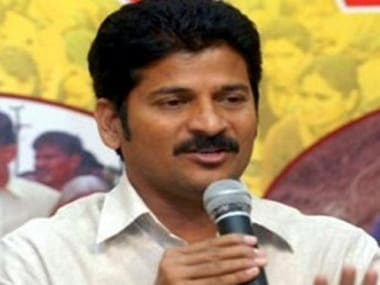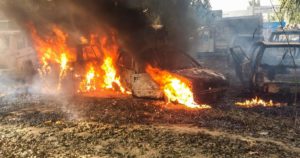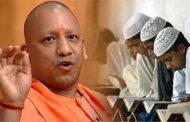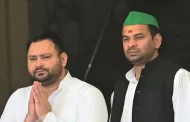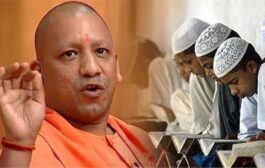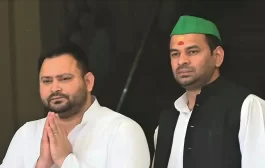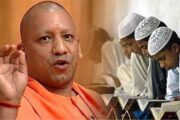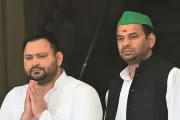As though the allegations of EVM tampering during the recent Chhattisgarh Assembly polls weren’t enough, the State Election Commission is now under attack for inconsistent voter turnout data since the final phase of polling on 20 November.
At loggerheads over the figures are the State Election Commission and the Chhattisgarh government’s Directorate of Public Relations (DPR), from where the nodal officer to disseminate information about the elections is appointed.
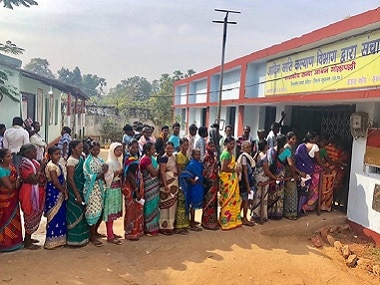
While the State Election Commission has declared the final cumulative polling percentage for both phases of the Assembly elections as 76.35 percent, the DPR’s website pegged the figure at 76.60 percent seven days after voting ended.
What’s worse is that in some constituencies such as Bharatpur-Sonhat, which went to polls in the final phase, there were wide differences between the polling percentages released by the two bodies — on the day of voting, the voter turnout was declared to be 65.32 percent, but the Election Commission later pegged it at 72.88 percent and the DPR at 84 percent.
However, it is the small difference of 0.25 percent (between 76.35 and 76.60) in the final voting percentage that has alarmed the Opposition Congress, considering that in the 2013 elections, the party had lost to the BJP with a 0.75 percent margin in voting percentage.
Changing numbers between State Election Commission and DPR
For Chhattisgarh’s 90 Assembly seats, polling was held in two phases. The electorate cast its ballots for 18 seats affected by Left-Wing Extremism first on 12 November. Hours after polling ended, the Election Commission declared the voting percentage as 60.49 percent, but revised the figures the next day to 76.28 percent.
voting ended. According to the data released by the Election Commission the same day, the voter turnout was 66.63 percent till 6 pm. Chhattisgarh Chief Electoral Officer Subrata Sahu said polling had continued even after 6 pm, and that they would arrive at the exact data late at night or early the next day.
The next evening, the Election Commission announced that the polling percentage had risen to 76.35 percent for 72 seats.
The State Election Commission mentioned in the information letter issued at the press conference that the polling parties from all 72 constituencies had all returned safely and had deposited their polling material at the collection centres. It also announced that the machines used in the elections had been sealed in the presence of all political parties and contestants.
However, on 27 November, seven days after polling, DPR released its data on voting percentage across all 90 seats. Here, the final overall voter turnout was pegged at 76.60 percent.
Constituency-wise data released by the Election Commission on 21 November and DPR on 27 November had wide differences, as well. While the DPR figures showed a majority of the seats with higher polling percentages, some like Premnagar showed a near 2 percent lower turnout.
| Constituency | Polling percentage on 21 Nov | Polling percentage on 27 Nov |
| Bharatpur Sonhat | 72.88 | 84 |
| Bhatgaon | 76.99 | 78.21 |
| Pratappur | 82.52 | 83.38 |
| Lormi | 71.66 | 72.08 |
| Mungeli | 67.4 | 69.54 |
| Bhatapara | 75.69 | 76.34 |
| Saja | 81.74 | 82.39 |
| Bhanupratappur | 76.77 | 77.25 |
| Kondagaon | 82.84 | 83.48 |
| Bijapur | 47.35 | 48.49 |
| Premnagar | 82.66 | 80.42 |
If we look at the results of previous elections in Chhattisgarh, it is apparent that a small difference in voting percentage swayed the results for many candidates.
For example, Leader of Opposition in the Assembly, Congress leader TS Singh Deo, won the 2008 election by a mere 900 votes. Raju Chhattri of the BJP won by 608 votes from Takhatpur in 2013, while Mohala-Manpur’s Tejkunwar of the Congress won by 956 votes. In Dongargaon, Congress leader Daleshwar Sahu won by 1,698 votes, and Raipur Rural bagged the Satyanarayan Sharma by 1,861 votes.
In 2013, as many as 11 candidates won or lost the election by a meager margin of 2,000 to 3,000 votes.
Congress spokesperson for Chhattisgarh Shailesh Nitin Trivedi pointed out that the party had lost the 2013 elections by a mere 0.75 percent difference in voting percentage with the BJP.
However, the Chief Electoral Officer of Chhattisgarh has defended the differing voter turnout data, saying that the figures released earlier were part of provisional data. “This is the final data (referring to figures released on 21 November). Polling was held in remote areas in some places, and elsewhere, officials had to arrive via helicopters. This took time, so it’s wrong to say that the percentage was increased. We arrived at the data after matching all polling data.”
But Chhattisgarh convener of the Association for Democratic Reforms Gautam Bandopadhyay sounded a warning, pointing to data released by the state DPR on 27 November. “These are not the old days. If polling data comes after seven days of voting, it’s worrisome. The Election Commission should review its work,” he said.
The trouble with mock poll data
The matter is not just of the polling percentage in Chhattisgarh. It has been found that mock poll data from EVMs were not deleted, as is the norm, and was added to the final poll data.
A mock poll is conducted an hour prior to polling, where a minimum of 50 votes are cast in an EVM at one booth in the presence of polling agents. It is mandatory that actual polling be started only after the results of the mock poll are entered into Form 17C and deleted from the voting machines.
In Chhattisgarh, plenty of mock poll glitches came up. Also, mock poll votes were found to not have been deleted and subsequently added to the final tally.
The State Election Commission has even accepted the blunder and is now awaiting further directions from the Election Commission of India. Amid claims of EVM manipulation by the Opposition, the Election Commission of India has issued orders to not release booth-wise data of polling.
On mock poll votes not being deleted, Chhattisgarh BJP president Dharamlal Kaushik said: “The Election Commission will decide over the matter. If there is doubt, it needs investigation.”
Subrata Dey, state spokesperson of Ajit Jogi’s Janata Congress Chhattisgarh, said the Election Commission “should take up the issue seriously, and an investigation should be done impartially”. “Action should be taken so that voters’ trust on the election process remains intact,” he added.
Complaints of inconsistency in the election code of conduct being following as well as poll rigging have also been reported from Madhya Pradesh after the state when to the polls on 28 November.
source: Firstpost.com

